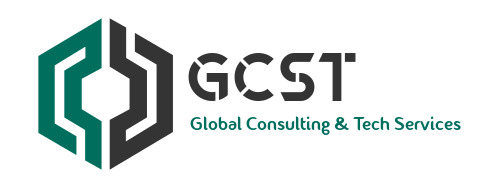If source code gets leaked or stolen, it can cause massive damage to your organization. It’s not just about financial losses – it can also decrease customers’ trust and negatively impact your reputation. That’s why source code security should be among your priorities if it isn’t already.
With the rise of data protection regulations and the increasing fines, companies worldwide focus more on cybersecurity, especially on the safety and privacy of sensitive customer data such as Personally Identifiable Information (PII). However, an efficient data security strategy should also cover intellectual property (IP) and the protection of trade secrets. Depending on the sector, IP can mean different things. For software and technology companies, IP often takes the form of proprietary source code.
Although the use of open source components is booming, every organization that relies on source code for its operation also has some IP within its code that should be protect.
This can be a newly developed algorithm related to payment processing or fraud detection and other business-critical elements that run digitally. If the core value of your business lies in this intellectual property, securing it is paramount to ensure the success, health, and ultimately the future of your business.
Why do you need source code protection?
In the past few years, efforts to compromise devices, apps, and software have surged as the rewards can be highly valuable. Source code plays a critical role in building applications, making it crucial proprietary information. Still, it is often left out of security considerations.
Your source code can contain secrets, such as API or encryption keys, OAuth tokens, passwords, and more. It is also common for PII to coexist with source code. Without protection, these are available to all repository contributors meaning that they can clone, copy, and distribute them.
Dealing with most security issues linked to source code can feel like a race against time; however, companies cannot rely on outdated measures and methods, as these often do not offer much security.
Many organizations continue to neglect source code protection, even though major companies such as Adobe, Mercedes-Benz, Nissan, or Microsoft have had their source code leaked and vulnerabilities exposed. Even GitHub had a code leak in early November 2020.
Source code theft is a problem for any company that develops its own software products, regardless of whether it is a startup, an SMB, or an enterprise.
Organizations must protect their valuable source code from various security risks, including outsider and insider threats. If it gets leak or stolen, source code may not only give your competitors a leading edge in the development of new products, causing financial damage to your business, but hackers can also use it to exploit vulnerabilities. Besides competitive and financial damage, it can even ruin your company if it falls into the wrong hands.
Source code security is vital to the health of your organization, especially if you balance the potential risks and business impacts that security vulnerabilities can have.
How to secure source code?
Your source code can be best protect by taking a layer approach. This is necessary to prevent its loss, which can cause reputational damage and loss of competitive advantage to your company, but it can come with regulatory fines too. What’s more, insecure source code can compromise other sensitive data.
Let’s check what you can do to protect your source code efficiently:
1. Create a source code protection policy
Set up a source code protection policy by defining a set of rules, requirements, and procedures for handling and protecting code. This policy will help safeguard software and devices from threats such as reverse engineering and code tampering. It should also cover source code development processes and personnel involved in code development.
Include secure access and use of source code repositories such as Git and Apache Subversion, encryption protocols, application hardening, shielding processes, and in-app protection methods.
Your source code protection policy should also involve documentation and training on secure coding practices and the incorporation of secure development methodologies into the software development lifecycle (SDLC).
2. Prevent the use of insecure source code
Use source code security analysis tools, such as Static Application Security Testing (SAST), to detect security flaws and other issues during development.
Static code analyzers scan source code and related dependencies (frameworks and libraries) for specific vulnerabilities as well as for compliance with coding standards. These tools reduce security risks in applications by finding vulnerabilities earlier in the SDLC and providing real-time feedback to development teams on issues.
SAST tools, however, cannot identify vulnerabilities outside the code, such as those defects that might be found in third-party interfaces. For this, you’ll need Dynamic Application Security Testing (DAST) tools that can detect a wide range of vulnerabilities, including the ones from the OWASP Top Ten. Examples include cross-site scripting (XSS), injection errors like SQL injection, path traversal, and insecure server configuration.
3. Access control
Define who’s allowed to access source code, codebase and source code repositories. There’s little to no reason that anyone other than hands-on employees work with your source code, but even for those that do, set up two-factor authentication. In this way, you can ensure that no suspicious characters find their way into your source code. Through authentication and authorization, access control policies ensure that users are who they say they are and that they have appropriate access to company data.
4. Use encryption and monitoring
Make sure you have the ability to encrypt sensitive data both in transit and at rest. It’s also important to monitor your data at all times and be alert when any suspicious activity comes to light. In this way, you can be ready to act swiftly, whether it is about tracking, limiting, or reversing the damage. You can also prevent it before any actual harm happens.
5. Deploy network security tools
Implementing network security solutions such as firewalls, Virtual Private Networks (VPN), anti-virus, and anti-malware software count as basic protection. These solutions safeguard your source code from external exploits of hackers and ensure secure data sharing between employees and data sources.
6. Don’t forget about endpoint security
Secure your endpoints or entry points of end-user devices such as desktops and laptops from risky activities and malicious attacks with endpoint security software. Data Loss Prevention (DLP) solutions can efficiently prevent your source code from leaving the endpoint and stop source code exfiltration.
These tools can protect sensitive information both in physical and virtual environments, regardless of the endpoint’s physical location and whether it’s connected to the internet or not. Endpoint DLPs offer you the possibility to track the movement of sensitive data and take remediation actions.
7. Pay attention to patents & copyright
Make sure that all your concepts and inventions related to software are protected by copyright law and necessary patents. A major difference between these two is that while patents protect the idea, copyright safeguards the written code. As software-related inventions are increasingly popular, you should treat this proprietary information just like other intellectual property.
How can Endpoint Protector protect your source code?
Endpoint Protector DLP software is a solution that monitors all file transfers and uploads, helping you to prevent source code leaks from unintentional and malicious insiders. It is a cross-platform DLP software that supports modern workflows and offers various functionalities to protect your valuable source code regardless of the operating system.
With it, you can also control the USB and peripheral ports of the devices in your organization and prevent source code from leakage and theft by being copied onto portable storage devices. You can limit the use of USB and peripheral ports to authorized company-issued devices.
What’s more, you can also ensure that any company data copied onto USBs will be automatically encrypted with government-approved 256bit AES CBC-mode encryption.
It’s easy to create custom DLP policies, defining source code as sensitive data and applying protection policies to it. While many DLP tools struggle to accurately identify programming languages due to the complex libraries needed for it, Endpoint Protector has revolutionized source code detection by implementing N-gram-based text categorization. Thus it identifies programming languages, including Python, Java, C++, PHP, JavaScript, etc., with an accuracy rate as high as 98%. Once you can accurately identify the source code, it becomes easy to apply DLP policies to monitor and protect it.
Endpoint Protector also provides a powerful reporting and analysis tool. Real-time alerts allow you a faster and more accurate data security incident prevention or mitigation.
Resource : Best Practices for Source Code Security | Endpoint Protector

Software Asset Management CyberSecurity Consultants in the Middle East (gcst.ae)

